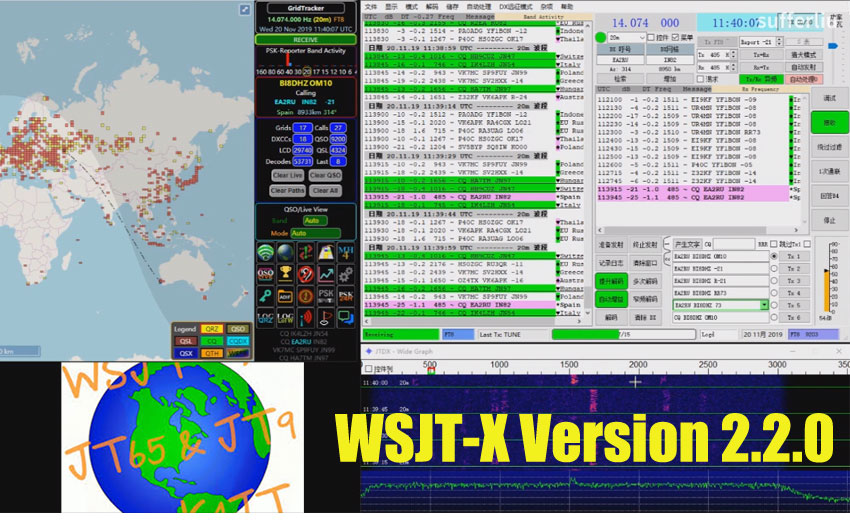+86 15093323284 hams@ailunce.com
WSJT-X Version 2.2.0 is Now in General Release

WSJT-X version 2.2.0 is now in general availability release, after a short stint in beta (or release candidate) status. WSJT-X version 2.2 offers 10 different protocols or modes — FT4, FT8, JT4, JT9, JT65, QRA64, ISCAT, MSK144, WSPR, and Echo. The first six are designed for reliable contacts under weak-signal conditions, and they use nearly identical message structure and source encoding. JT65 and QRA64 were designed for EME (“moonbounce”) on VHF/UHF bands but have also proven very effective for worldwide very low-power communication on HF bands.
“FT8 is operationally similar but four times faster (15-second T/R [transmit-receive] sequences) and less sensitive by a few decibels,” developer Joe Taylor, K1JT, explains in the version 2.2.0 User Guide. “FT4 is faster still (7.5-second T/R sequences) and especially well suited for contesting.”
Taylor noted that even with their shorter transmit-receive sequences, FT4 and FT8 are considered “slow modes,” because their message frames are sent only once per transmission. “All fast modes in WSJT-X send their message frames repeatedly, as many times as will fit into the [transmit] sequence length,” he explained.
Compared with FT8, FT4 is 3.5 dB less sensitive and requires 1.6 times the bandwidth, but it offers the potential for twice the contact rate.
New in WSJT-X version 2.2.0: FT8 decoding is now spread over three intervals, the first starting at 11.8 seconds into a receive sequence and typically yielding around 85% of the possible decodes. This means users see most decodes much sooner than with previous versions. A second processing step starts at 13.5 seconds, and a third at 14.7 seconds.
“Overall decoding yield on crowded bands is improved by 10% or more,” Taylor said.
Other changes: Signal-to-noise (SNR) estimates no longer saturate at +20 dB, and large signals in the passband no longer cause the SNR of weaker signals to be biased low. Times written to the ALL.TXT cumulative journal file are now correct, even when decoding occurs after the T/R sequence boundary.
ARRL News











